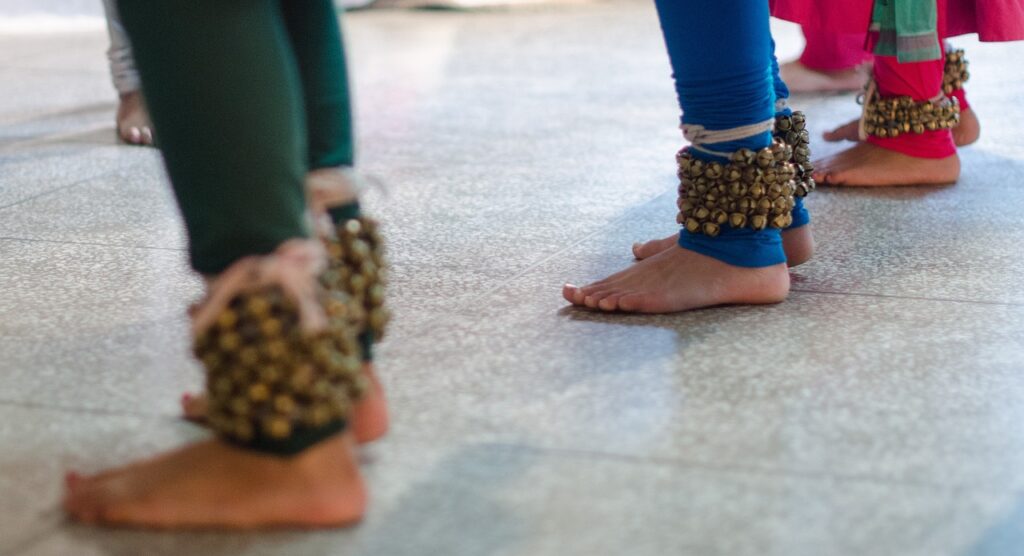SAM – The first beat of a taal, in Indian classical music and dance, is known as the “sam” or “sum.” It marks the beginning of a musical cycle and sets the rhythm for the taal. In most taals, the sam is emphasized, either by a musical accent or by a specific gesture made by the performer, to clearly indicate the start of a new cycle. The first beat is considered to be the most important beat in a taal and sets the foundation for the rhythm that follows.
In Indian classical music and dance, every rhythm, melody, and composition are intricately woven together. Central to this intricate art form is the concept of “Taal,” which refers to rhythmic patterns or cycles. At the heart of every Taal lies its foundation, known as the “Sam” or “Sum,” which can be likened to the first heartbeat of a musical composition.

The Essence of Sam
The term “Sam” is derived from the Sanskrit word “Sama,” which translates to “equal” or “balanced.” In the context of music, the Sam represents the starting point, the reference beat against which all other beats and rhythmic variations are measured. It serves as a rhythmic anchor that provides stability and structure to the entire composition. Just as a compass points north, the Sam guides musicians, ensuring that the rhythm stays coherent and doesn’t lose its sense of proportion.
Symbolism and Importance
The Sam is not just a theoretical concept; it holds immense symbolism within Indian classical music. It is often referred to as the “nucleus” or “seed” from which the entire rhythm pattern grows. In this sense, Sam embodies the creative potential that exists within every composition. Just as a single word can set the tone for an entire poem, Sam sets the tone for the entire musical piece, dictating the pace, mood, and emotional resonance of the performance.
Role in Different Taals
Indian classical music encompasses a diverse array of Taals, each with its own unique rhythmic structure. Whether it’s the popular 16-beat Teental or the intricate 7-beat Rupak Taal, every Taal’s cycle is defined by the placement of its beats relative to the Sam. Musicians use mnemonic syllables called “bols” to represent these beats, and understanding the placement of these bols in relation to the Sam is crucial for maintaining the rhythm’s integrity.
Dynamic Flexibility
While the Sam provides a stable foundation, it’s important to note that Indian classical music isn’t static. Improvisation is a key element of this musical tradition, allowing musicians to explore and innovate within the confines of the Taal structure. The Sam remains a constant reference point, even as musicians experiment with intricate rhythmic patterns and explore new avenues of creativity.
In the world of Indian Classical Music and Dance, the concept of Sam holds immense significance. It’s more than just a starting beat; it’s the core around which the entire composition revolves. The Sam is a constant, unifying element that connects musicians and audiences across generations. So, the next time you tap your foot to the mesmerizing rhythm of Indian classical music, remember that it all begins with the Sam, the first beat of Taal.
About the Author: – Neha Khunteta
Neha Khunteta is a highly experienced Kathak dancer and trainer with over 15 years of experience. She is the founder of Kathak By Neha, one of the Best Kathak Dance Academies. With her profound expertise and experience, Neha has established herself as one of the foremost educators in Kathak.
If you are interested in learning more about Kathak dance or finding out about Neha’s upcoming workshops and classes, please visit her website or contact her through the details provided in the blog.
Should you require further assistance or insights, please don’t hesitate to reach out to us through the following channels: contact us on
Email: neha@kathakbyneha.in or contact: +91-8619116616
Stay connected with us on Quora, Instagram, Facebook, and subscribe Youtube channel for enriching video content.
